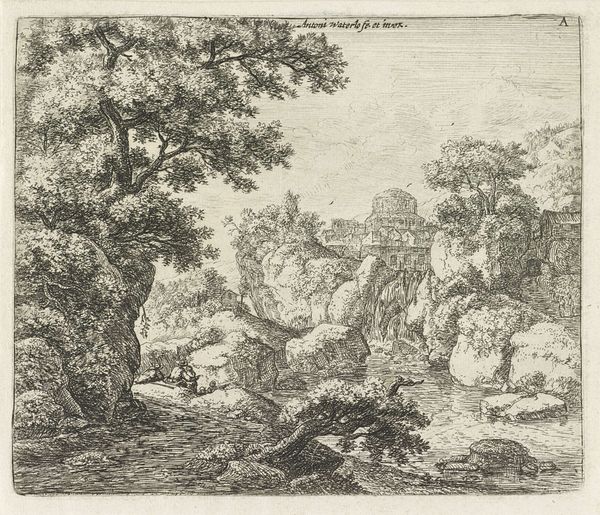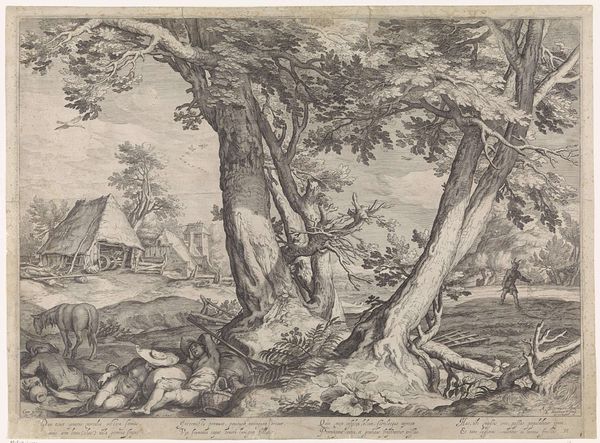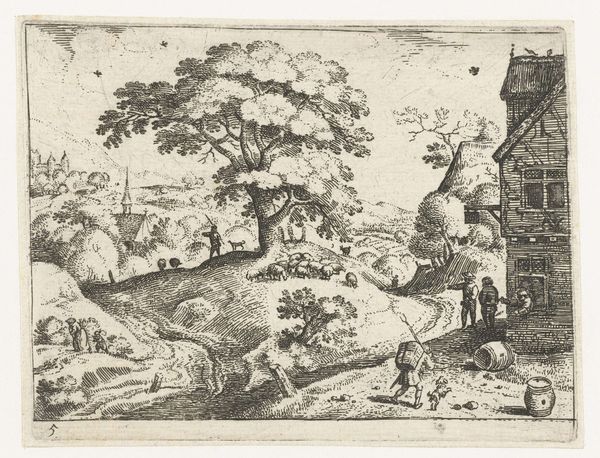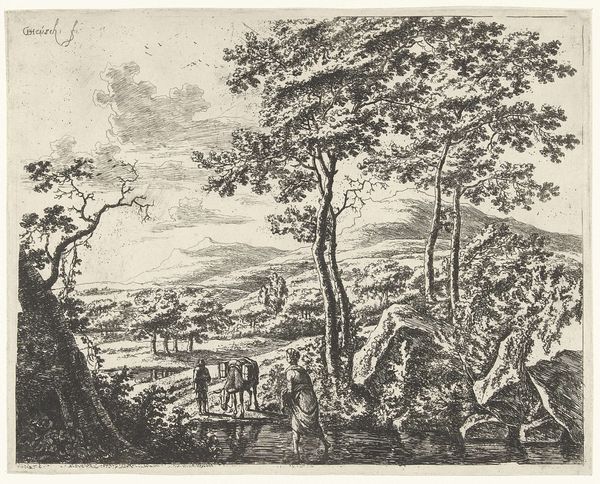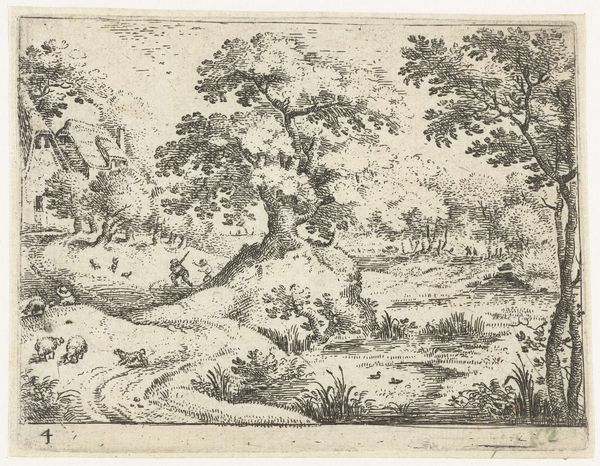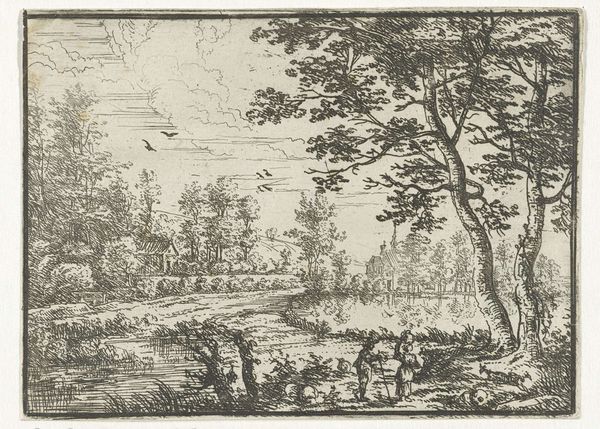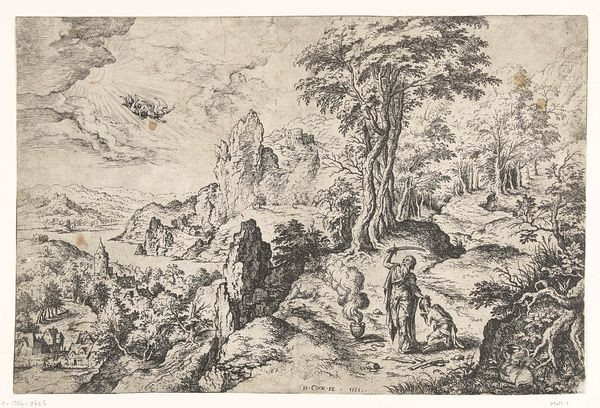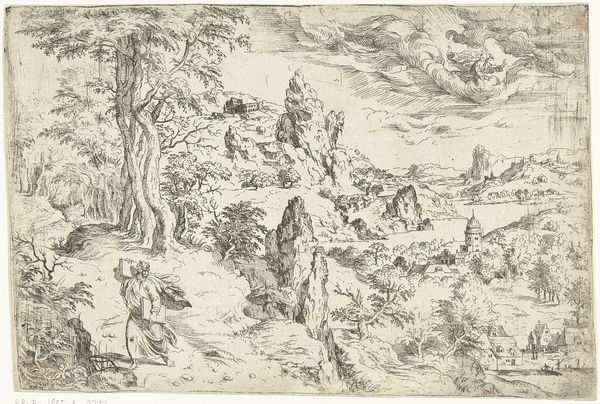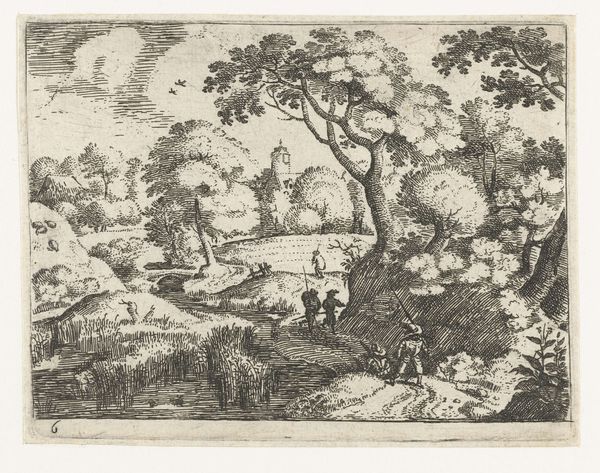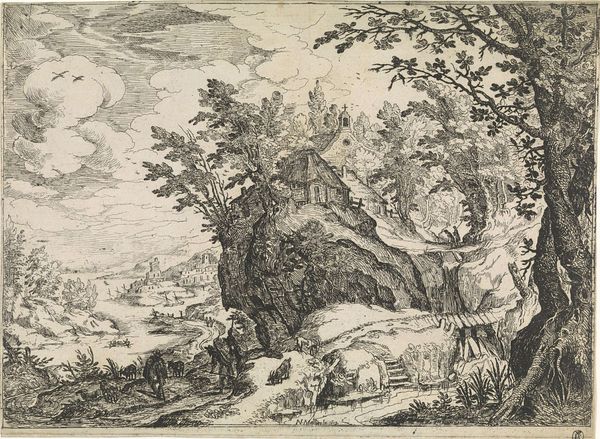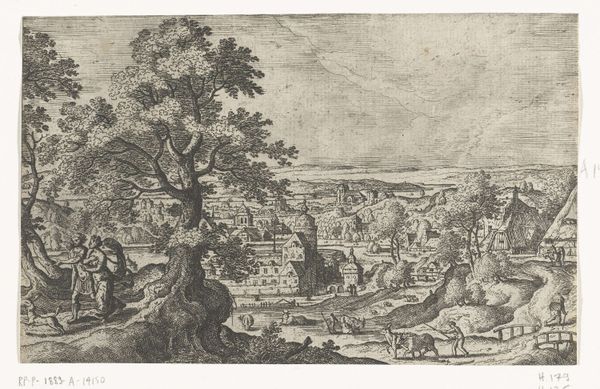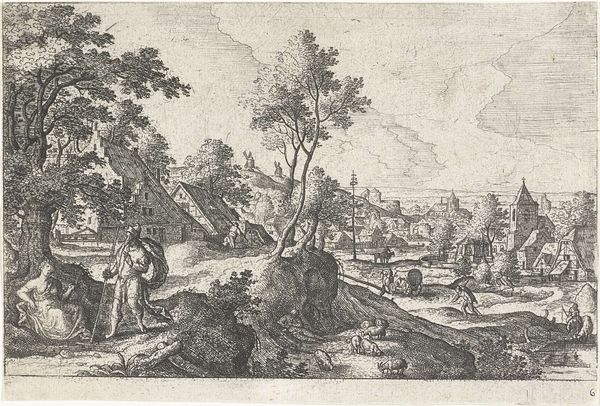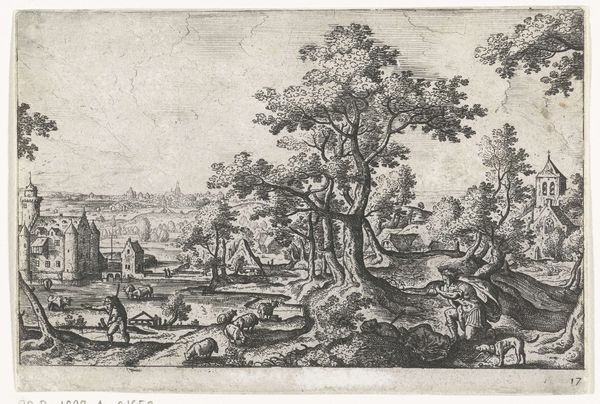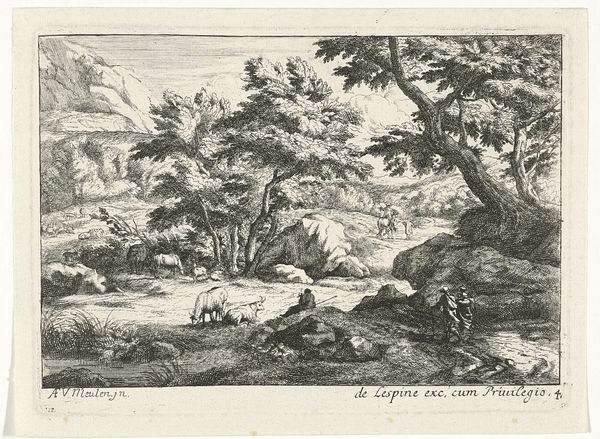
print, engraving
#
pen drawing
# print
#
landscape
#
form
#
line
#
genre-painting
#
northern-renaissance
#
engraving
Dimensions: height 94 mm, width 124 mm
Copyright: Rijks Museum: Open Domain
Editor: This is Jacob Savery I's "Landschap met reizigers nabij kasteel," or "Landscape with Travelers near a Castle," created between 1584 and 1603. It's a print – an engraving, actually. I’m struck by how the density of the lines creates such a detailed landscape, almost like a miniature world. What stands out to you? Curator: Initially, one must recognize the stark linearity that dictates the overall form. Savery masterfully utilizes the engraver’s line to construct a complex pictorial space. Note how the hatching varies in density, not to describe volume per se, but rather to establish visual hierarchies within the composition. What do you observe about the interplay between light and shadow here? Editor: Well, the lighter areas seem almost untouched, while the shadowed areas are built up with lots of tiny lines, almost like the artist is sculpting with the ink. Does this contrast have a name, or a specific function in the image? Curator: Indeed. Consider this interplay not merely as descriptive of light, but as a formal strategy to direct the viewer's gaze. Observe how the artist deploys linear perspective—primarily through the receding river—yet the surrounding textures flatten the image, creating a fascinating tension between depth and surface. It avoids illusions of three dimensions that developed in the High Renaissance. The artist does not aim for representational accuracy; it aims for effect through semiotic representation. Editor: So it's less about creating a realistic scene and more about how all the formal elements work together? I can see that. Curator: Precisely. Think of the line, not as a means to an end, but as an end in itself. Savery exploits the inherent qualities of the engraved line to construct meaning, and subsequently challenges us to interpret meaning derived from his stylistic vocabulary. Is this clear? Editor: Absolutely. I hadn’t considered how much the texture and direction of the lines themselves contribute to the overall effect. I see now that his choice of lines create form. Curator: A pertinent observation. This reinforces our understanding of the landscape as a site where formal elements become actors within an ordered pictorial space.
Comments
No comments
Be the first to comment and join the conversation on the ultimate creative platform.
